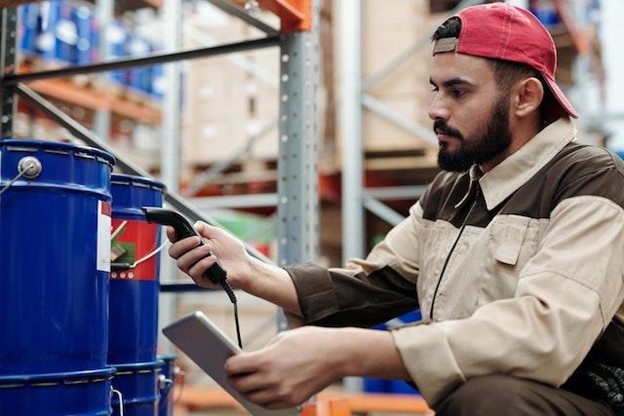Investing With Technology: 7 Benefits of Warehouse Automation
in Technology by Xiaoyun TU

Technology helps us in every aspect of our lives, and your warehouse operations should be no exception. Why continue to struggle with tedious and error-prone manual tasks when you could let automated systems take the strain?
Yes, there will always be a place for human input and intuition. But if you can combine that with technology, the benefits are immediate and far-reaching. In this post, we’ll explore exactly what warehouse automation means and the many advantages it brings.
What is warehouse automation?
Warehouse automation means automating some or all of the tasks involved in running a warehouse. It covers everything from basic functions like inventory movement to more complex operations such as order splitting or cross-docking.
However, it doesn’t necessarily mean an army of robots running the place. Warehouse automation can involve robotic technology (known as physical automation), or it can be digital, which just means automating repetitive manual tasks with software. This may be part of a specific warehouse management system (WMS) or an all-in-one inventory management software solution.
Either way, the aim of warehouse automation is to improve efficiency and accuracy, which in turn reduces costs and keeps your customers happy.
Types of warehouse automation
Physical automation is more commonly used in large-volume warehouses with space to accommodate the necessary equipment. This can include conveyors or carousels for moving inventory around and automated sortation systems that recognize items by size and type.
Automated storage and retrieval systems (AS/RS) involve robots lifting racks of goods and delivering them to human pickers. Drones may be used inside the warehouse as well as for delivery. It’s also possible to use autonomous vehicles to move inventory between warehouses and retail locations.

Image sourced from SelectHub
Digital automation includes technology like barcoding, RFID scanning, and voice tasking—all of which make it faster for human staff to receive, put away, or pick items for orders. The Internet of Things (IoT) enables smart shelving and pallets that provide real-time inventory data, and return handling may also be automated.
An auto-generated pack list tells staff which type of packaging to use, and automated shipping includes dimension sensors, auto-printed labels, and carrier selection. Warehouse automation can also handle replenishment, with automatic reordering, so that warehouse staff don’t have to remember to inform the purchasing team when stock is running low.
Signs that you need to automate your warehouse
If your warehouse is small and only handles a relatively low volume of orders, you may not have considered automation. But if you’re experiencing any of these issues, it’s probably time to start checking out your options:
- Your warehouse tasks are labor-intensive
- You can no longer handle the volume of orders
- Inventory counts reveal discrepancies in stock levels
- You’re experiencing inventory damage or spoilage
- Staff are unhappy or overworked
- Customers are complaining about errors or delays
- Your overheads and labor costs are too high
- You want to tap into retail trends like same-day delivery.
Does any of this sound familiar? Let’s take a look at how warehouse automation can help.
7 benefits of warehouse automation
1. Improved productivity
When you replace manual tasks with automation, you’ll immediately see a boost in productivity. For example, the receiving team won’t have to write down the SKU of every item that arrives from a supplier—they can simply use barcodes and log the goods into a paperless computer system.

Free to use image sourced on Pexels
It also becomes easier to see where products have been stored, so there’s no time wasted searching for them when customer orders come in. Warehouse automation enables you to carry out fast and efficient cycle counts, and quickly identify any problems.
Everyone in the warehouse has access to the central system, with all the necessary data or instructions. For example, the system could tell staff to pick items for multiple similar orders at once, minimizing the time they spend walking around the warehouse.
2. Reduction in errors
Automation is head and shoulders above manual methods when it comes to reducing errors. If you’re still using spreadsheets or pen and paper, it’s all too common for someone to enter incorrect data or the wrong address on a shipping label. And paper lists can easily go missing.
Barcode or RFID scanners ensure that the correct products are selected for each order and keep track of the goods each time they’re moved or shipped. This provides better visibility into your inventory, making stockouts and overstocking less likely.
By reducing errors, you’re also preventing losses and waste caused by incorrect storage, such as failing to keep perishables in refrigerated conditions. Automation can include smart sensors inside packaging, which alert you if the temperature is wrong.
3. Minimized costs
Of course, a reduction in errors and waste also translates into lower costs. Stockouts, excess stock, and dead stock all cost you money, and automation helps prevent that. Plus, fewer mistakes mean fewer refunds for customers who receive a damaged, erroneous, or delayed order.
Warehouse automation also helps you maximize your resources. It reduces labor costs as you can employ fewer staff per shift and still achieve high productivity, while robots work all hours and enable you to process orders 24/7.

Image sourced from Kardex
When your warehouse is well-organized with everything in its place, you can maximize the available space and may even be able to use smaller premises with lower holding costs. (It’s also good for sustainability, especially if you use sensor-based energy-efficient lighting.)
4. Full scalability
Warehouse automation helps your business to be more flexible and scalable. Even if you usually combine computerization and robotics with plenty of human input, you can decide to automate more tasks during busy periods like the holiday season, instead of scrambling to hire temporary staff.
This also means you can scale your operations down at quieter times rather than paying employees for unproductive work hours. This ability to manage fluctuating input and output means you can respond quickly to changes in demand.
Automated warehouses are also more resilient to challenges like a pandemic or even just an extreme weather event. Using robots and cloud-based software enables you to keep going with fewer (or no) staff on the premises.
5. Higher employee morale
Automating repetitive tasks removes much of the tedium from daily warehouse activities It also means that managers can make better use of their human resources, with employees able to focus on specialized tasks that are more intellectually stimulating.
They’ll also get more done because it’s easier to find items and follow clear instructions on what to pick and pack. It’s rewarding to see that orders go out of the door faster, and fewer errors mean less negative feedback from managers.
When warehouse staff are happy at work, they’ll be motivated to improve their skills. And they’re more likely to stick around, which means lower recruitment costs for the business.
6. Safer working conditions
An automated warehouse doesn’t only give you improved efficiency—it’s safer, too. For example, you could use robotic technology so that human staff don’t have to handle heavy goods or items stored on high racks. Robots can also deal with hazardous goods or navigate cramped areas of the warehouse.

Image sourced from U.S. Bureau Of Labor Statistics
Even if you don’t use physical automation, the central system can be set up to inform employees if certain products require special handling or storage to reduce the risk of injury or accidental damage.
If you’re reaching out to potential business partners or investors, mention safety-related automation in your business proposal template, as it shows your commitment to staff wellbeing.
7. Satisfied customers
The goal of any retail business is to keep customers happy, and warehouse automation has a big role to play. For one thing, the reduction in costs can be passed on to customers in the form of lower prices or free shipping.
The ability to send orders out faster means customers can take advantage of two-day or next-day delivery, and the reduction in errors means they should always receive the package on time—with the right items inside.
Returns are also handled more efficiently—something customers care deeply about (84% of online shoppers would abandon a retailer after a bad returns experience). If deliveries and returns are smooth, customers won’t feel the need to complain or post negative reviews.
How much does it cost to automate a warehouse?
This varies hugely depending on the size of your operations and the type of automation you choose. Suppose you want to go for a fully automated warehouse with equipment like conveyors, smart shelving, and automated retrieval. In that case, there’s going to be a significant upfront cost as well as maintenance.
If you choose a software solution, this can be affordable thanks to cloud-based technology and the SaaS model with a monthly subscription fee. (On-premises computer systems are more expensive and involve bulky equipment and ongoing maintenance.)
Either way, the increased efficiency should save you money in the long run. Just make sure the solution suits your business model and is scalable for future growth.

Free to use image sourced from Unsplash
Final thoughts
Although automation can’t magically solve every problem, it’s a excellent foundation for making your whole business more efficient. As well as bringing speed and accuracy to your warehouse processes, it enhances employee morale and customer satisfaction, and reduces your costs.
If your inventory management software features include analytics, you can also use the data collected by the system to check that it’s helping you achieve your goals, and make further improvements to things like storage, layout, and resource management.




